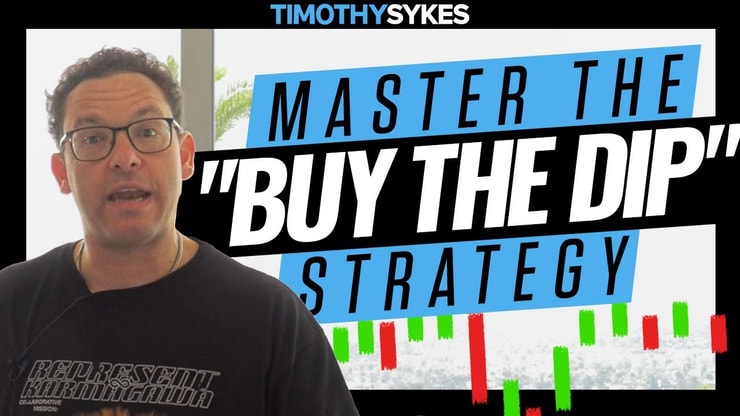*Written by AI, Edited by Humans
“Sell the rip” is a trading strategy where investors sell an asset after a rapid increase in its price. This approach capitalizes on the idea that what goes up must come down, allowing traders to pocket gains before a potential decline. It’s a tactic often employed in volatile markets, where price swings can happen quickly. This article will delve into the ins and outs of the “sell the rip” strategy, its indicators, market conditions that favor it, and the risks involved. So, if you’re looking to make sense of this strategy, you’re in the right place.
Table of Contents
- 1 What Is “Sell the Rip” Strategy?
- 2 Best Sell the Rip Indicators
- 3 Market Conditions that Lead to Selling the Rip
- 4 How To Calculate Average Cost and Set Price Targets for Selling the Rip
- 5 Risks of Selling the Rip
- 6 Sell the Rip Vs Buy the Dip
- 7 Frequently Asked Questions
- 7.1 What Market Conditions are Best for Implementing the “Sell the Rip” Strategy?
- 7.2 How Can One Mitigate the Risks of Selling the Rip?
- 7.3 What Other Strategies Complement “Sell the Rip” in a Trading Portfolio?
- 7.4 What Role Do Prices and Dips Play in the Sell the Rip Strategy?
- 7.5 How Do Trading Tools Like Volume and Candlestick Indicators Help?
- 7.6 What Site Content and Author Recommendations Can Help Master Sell the Rip?
- 7.7 How Can Investments and Company Performance Affect the Strategy?
What Is “Sell the Rip” Strategy?
The “sell the rip” strategy is all about timing. Traders closely monitor the market, waiting for a stock or other asset to “rip” or rapidly increase in price. Once the asset hits a predetermined level, traders sell to lock in gains. This strategy relies heavily on technical analysis and various indicators to make informed decisions. It’s not about investing for the long term; it’s about seizing the opportunity for short-term gains.
However, like all things in the trading world, this strategy comes with its own set of risks. One wrong move and you could be staring at losses instead of gains. So, it’s crucial to do your research and have a solid plan in place.
Is Selling the Rip the Same as Selling the Rally?
Selling the rip and selling the rally might seem similar, but they’re not identical. Both strategies involve selling an asset after a price increase, but the timing and indicators used can differ. Selling the rip often happens over a shorter time frame, focusing on quick gains. On the other hand, selling the rally might involve holding the asset for a longer period before selling. The idea is the same, but the execution and results can vary. So, don’t mix up these two strategies; each has its own set of rules and risks.
Best Sell the Rip Indicators
When it comes to “sell the rip,” indicators are your best friends. These tools provide the data and information you need to make educated trades.
The way you get these tools is with a top trading platform like StocksToTrade.
StocksToTrade is a powerful trading platform that integrates with most major brokers. I helped to design it, which means it has all the trading indicators, news sources, and stock screening capabilities that traders like me look for in a platform.
Grab your 14-day StocksToTrade trial today — it’s only $7!
Let’s dive into some of the most reliable indicators for this strategy.
RSI
The Relative Strength Index (RSI) is a momentum indicator that measures the speed and change of price movements. When RSI crosses above 70, it’s often a sign that the asset is overbought, making it a prime candidate for a “sell the rip” strategy. But remember, no indicator offers a guarantee; always use RSI in conjunction with other indicators for a more comprehensive analysis.
More Breaking News
- INSW Set to Join S&P SmallCap 600: What Does This Mean for Investors?
- Zeekr’s Unexpected Surge: What’s Fueling the Rapid Rise?
- Intel’s Bold Leap: Will Its Stock Surge on Innovative AI Frameworks?
Stochastic Indicator
The Stochastic Indicator compares a stock’s closing price to its price range over a specific period. Like RSI, it ranges from 0 to 100 and is used to identify overbought or oversold conditions. When the Stochastic Indicator is above 80, it might be time to consider selling the rip. But don’t jump the gun; always double-check with other indicators and market conditions.
Internal Bar Strength (IBS)
Internal Bar Strength (IBS) is a lesser-known but effective indicator. It calculates the relative position of the close price within the range for a specific session. An IBS value close to 1 indicates the asset closed near its high, signaling a potential opportunity to sell the rip. But as with all indicators, IBS should be used in tandem with others for a more robust trading strategy.
Bollinger Bands®
Bollinger Bands® consist of a middle band being an N-period simple moving average (SMA), and an upper and lower band. When the price touches or crosses the upper band, it could be an indication to sell the rip. However, Bollinger Bands® are best used with other indicators like RSI or Stochastic to confirm the signal.
Moving Average
The Moving Average smooths out price data to create a single flowing line, making it easier to identify the direction of the trend. When the price crosses above a moving average, it might be an opportunity to sell the rip. But remember, moving averages are lagging indicators, so they’re best used in conjunction with other, leading indicators.
Williams R%
Williams %R, or Williams Percent Range, is a momentum indicator that moves between 0 and -100. It measures overbought and oversold levels. A reading above -20 is generally considered overbought. When you see this, get ready; it might be time to sell the rip.
Market Conditions that Lead to Selling the Rip
Not all market conditions are ripe for the “sell the rip” strategy. Knowing when to employ this tactic can be the difference between gains and losses. So, let’s break down the market conditions that are most favorable — and the indicators that indicate them!
Momentum Indicators
Momentum indicators like RSI and MACD can signal when an asset is gaining or losing momentum. A sudden spike in these indicators often precedes a rip, making them essential tools for traders looking to sell the rip.
Sentiment Indicators
Sentiment indicators gauge the mood of the market. When sentiment is overly bullish, it can often signal that a rip is about to occur. Keep an eye on tools like the Put/Call ratio or surveys that measure investor sentiment.
Overbought Conditions
Overbought conditions are a trader’s cue to start considering the “sell the rip” strategy. When an asset’s price is significantly higher than its average, and other indicators support it, the stage is set for selling the rip.
Major Sell-Offs and Sharp Declines
Major sell-offs or sharp declines in the market can create a reactionary rip. Traders often use these conditions as an opportunity to sell the rip, capitalizing on the market’s volatility.
Monthly Options Expirations
Options expirations, especially the monthly ones, can lead to increased volatility and price rips. Traders often use this time to implement “sell the rip” strategies, but it’s crucial to be aware of the increased risks involved.
How To Calculate Average Cost and Set Price Targets for Selling the Rip
Calculating the average cost and setting price targets are crucial steps in implementing a successful “sell the rip” strategy. Use tools like Fibonacci retracements or pivot points to identify potential resistance levels where you might consider selling. Once you’ve identified these levels, calculate your average cost by adding up the total amount spent on the asset and dividing it by the number of shares or contracts you hold.
Setting price targets involves determining the amount of gain you aim to achieve. Use indicators and chart patterns to identify potential upside and set your take-profit and stop-loss orders accordingly. This way, you’re prepared for both the best and worst-case scenarios.
Risks of Selling the Rip
No strategy is without risk, and “sell the rip” is no exception. The primary risk is mistiming the market. If you sell too early, you miss out on potential gains. Sell too late, and you could incur losses. Market conditions can change rapidly, and there’s no guarantee that a rip will be followed by a decline.
Another risk is the use of leverage. While leverage can amplify gains, it can also magnify losses. So, if you’re using margin to sell the rip, be extra cautious. Always use stop-loss orders to mitigate risk and protect your investment.
Sell the Rip Vs Buy the Dip
The main difference between “sell the rip” and “buy the dip” is the market condition each strategy aims to exploit. “Sell the rip” focuses on selling an asset after a rapid price increase to capture gains before a potential decline. On the other hand, “buy the dip” involves purchasing an asset after a price drop, anticipating a rebound. Both strategies have their merits and risks, and the best approach often depends on your trading style and market conditions.
It isn’t a silver bullet for your trading plan — but the sell the rip strategy is one of the many topics you should learn as part of your trading education!
Trading isn’t rocket science. It’s a skill you build and work on like any other. Trading has changed my life, and I think this way of life should be open to more people…
I’ve built my Trading Challenge to pass on the things I had to learn for myself. It’s the kind of community that I wish I had when I was starting out.
We don’t accept everyone. If you’re up for the challenge — I want to hear from you.
Apply to the Trading Challenge here.
Trading is a battlefield. The more knowledge you have, the better prepared you’ll be.
Do you sell the rip or buy the dip — or both? Let me know in the comments — I love hearing from my readers!
Frequently Asked Questions
What Market Conditions are Best for Implementing the “Sell the Rip” Strategy?
The best market conditions for implementing the “sell the rip” strategy are those that exhibit high volatility and momentum. Overbought conditions, bullish sentiment, and sharp declines followed by a rip are all favorable conditions for this strategy.
How Can One Mitigate the Risks of Selling the Rip?
Mitigating risks involves a combination of thorough research, using reliable indicators, and setting stop-loss orders. Always have a trading plan and stick to it. Diversifying your trading portfolio with other strategies can also help mitigate risks.
What Other Strategies Complement “Sell the Rip” in a Trading Portfolio?
Strategies like “buy the dip,” trend following, and breakout trading can complement the “sell the rip” strategy. Using a mix of these strategies can provide a well-rounded trading portfolio, helping to balance risks and opportunities.
What Role Do Prices and Dips Play in the Sell the Rip Strategy?
In the “Sell the Rip” strategy, prices and dips are critical factors. When a stock market dip occurs, traders might buy in anticipation of a price rise, often based on certain performance indicators. The liquidity of the asset can also influence how easily one can execute this strategy.
How Do Trading Tools Like Volume and Candlestick Indicators Help?
Trading tools like volume and candlestick indicators provide valuable insights into market sentiment. Higher volume usually signals strong investor interest, which is a key component in the “Sell the Rip” strategy. Understanding candlestick patterns helps in reading market trends, while the security’s settlement can affect your execution of the strategy.
What Site Content and Author Recommendations Can Help Master Sell the Rip?
There’s content on many sites that can guide investors on how to approach the “Sell the Rip” strategy. It’s crucial to consider a lot of examples before you try something with real money. Make sure to cross-verify any post or content you read to avoid misinformation.
How Can Investments and Company Performance Affect the Strategy?
The effectiveness of the “Sell the Rip” strategy is not just limited to the stock market; it also applies to investments in individual companies. The performance and fact-based analysis of a company can have a significant impact on the efficacy of this strategy.




Leave a reply